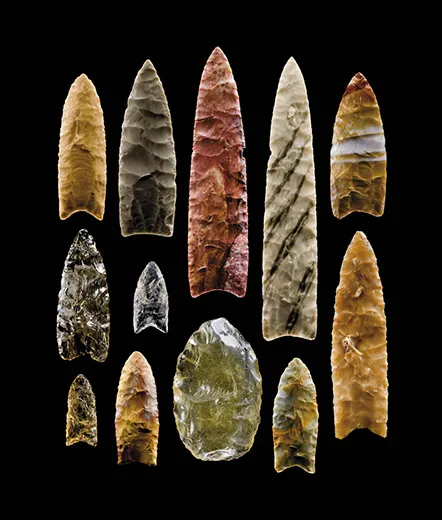A Scholarly Approach to Innovation
The Secretary of the Smithsonian draws the connection between the Clovis tools and Silicon Valley
/https://tf-cmsv2-smithsonianmag-media.s3.amazonaws.com/filer/From-the-Castle-clovis-points-631.jpg)
From about 100,000 to 50,000 years ago, Homo sapiens looked pretty much as we do today, and had ample brainpower, but as the historian Jared Diamond has written, “something was missing.” Their tools were rudimentary, sharp rocks at best. Suddenly came an explosion of innovation—finely hewn knives, carved figurines, hearths—roughly coinciding with the arrival of language. Which came first is a topic of debate, but without question this was humankind’s great “Aha!” moment, unleashing a wave of change that led to Homo sapiens quickly becoming the most widely dispersed species on earth.
In the superb book What Technology Wants, the journalist Kevin Kelly draws two conclusions from this episode. First, storytelling lies at the heart of innovation—a fleeting insight by one tribesman can be conveyed to another—and, second, cultural or technological innovation shares traits with biological evolution: Good insights provide a platform for ever-more-advanced ones.
In pre-Columbian America, a crucial early innovation was the deadly but beautiful Clovis point, appearing about 12,000 to 13,000 years ago, which improved the efficiency of hunting large mammals like New World mammoths, mastodons and camels. Clovis points could be detached from the spear to carve carcasses, which supplied meat and pelts. It is awe-inspiring to think that the walk on the National Mall from the Museum of Natural History, home to many fine Clovis specimens, to the Air and Space Museum, with its moon lander, represents a mere 15 millennia of human problem-solving.
Or you could take a different stroll from Natural History, toward the American Art Museum. Clovis tips were made of visually striking stones, possibly chosen to honor the animals they slayed. It’s not unreasonable to think of their beauty as a tiny first step toward the aesthetically revolutionary work of the video artist Nam June Paik, many of whose pieces will be on display at American Art from December to August.
Scholars increasingly recognize the importance of networks in fueling ingenuity. Curators at the Lemelson Center for the Study of Invention and Innovation, at the National Museum of American History, are at work on an exhibition called “Places of Innovation,” which will include not only Silicon Valley, but also Hartford, Connecticut, a post-Civil War nexus for skilled makers of guns, bicycles and sewing machines. Meantime, the center is introducing museums across the country to its popular Spark! Lab activities. In one, children work together to create a “car of the future” using PVC pipes, wheels and zip ties. Could the “Aha!” moments from such exercises nudge kids toward lives devoted to car design, aerospace engineering, even video art? We hope so. One day, innovations by these very same youngsters may grace the halls of the Smithsonian.
